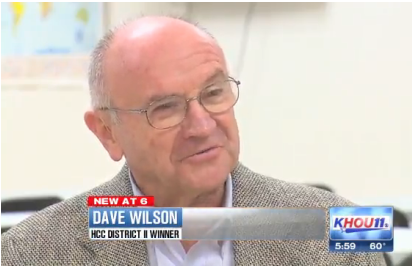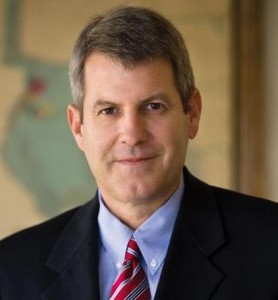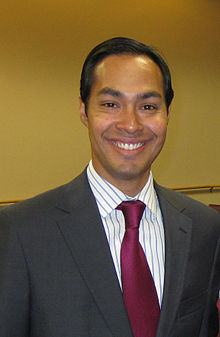Yesterday was a big day for the One Bin for All proposal.

Thursday [was] the deadline for private companies to submit bids to the city to build and run the facility. The bid guidelines call for a 75 percent diversion rate — that is, only 25 percent of solid waste should end up in landfills. The rest would be recycled, composted or converted into energy sources.
Currently, the city recycles 6 percent of its waste and diverts 19 percent overall, mostly lawn waste. Those numbers are well below state and national averages.
[…]
[Sustainability Director Laura] Spanjian pointed to a brand-new facility in Montgomery, Alabama, as proof that a one-bin system can work. Kyle Mowitz, the CEO of Infinitus Energy, which runs the Montgomery facility, said it has achieved 60 percent diversion since opening in April.
“I would’ve never done this project three years ago,” he said.“The technology wasn’t there.” Recent advances in optical technology and air density classification, Mowitz said, have “gone through the roof,” making mixed waste processing more practical.
“This is really the first facility in the country that’s doing what we’re doing.”
Mowitz, who said he expects to start turning a profit over the next year, added that the diversion rate should go up once the facility adds an anaerobic digestion system, in which microorganisms break down organic waste that might otherwise end up in landfills. The Houston plan also calls for anaerobic digestion. Critics argue that the technique may not work for unsorted municipal solid waste streams, which lack the uniformity that the microorganisms prefer.
“The problem is the critters are very finicky,” said Reid Lifset, a researcher at Yale’s School of Forestry and Environmental Studies. “If you don’t give them the organic materials they want, it’s hard to run a successful process.”
Paper and steel industry groups have opposed One Bin for All. In a letter to Houston Mayor Annise Parker, who supprts the plan, Gregory L. Crawford, executive director of the Steel Recycling Institute, which represents steel manufacturers, warned that the program “would produce unacceptable levels of contamination” in steel cans.
Mowitz disputed that argument, saying the Montgomery facility has had no problem selling recyclables “at a premium.”
The RFPs were issued in April. I sent a query to the Mayor’s office yesterday afternoon asking how many proposals were submitted, from whom, and if information about them were posted somewhere. I have not yet received a response, but when I do I will write about it.
As we know, the One Bin proposal is controversial, with several environmental organizations, banding together under the Zero Waste Houston banner, leading the opposition. Here’s their latest response to One Bin For All.
“No facility like this has ever achieved anything close to what our recycling goals are in Houston—and most have been outright disasters.” Melanie Scruggs with Texas Campaign for the Environment said. “City officials have set a 75% recycling goal for this proposal, but when we researched similar facilities, none have ever exceeded 30%. It’s been shown over and over that real, successful recycling will never be possible if the City tells residents to mix their garbage with recyclable materials in the same bin.”
The new report examines dozens of “one bin”-style waste facilities (known as “dirty material recovery facilities,” or dirty MRFs) that have failed in other cities or are only used as a last resort for the garbage stream. Their research contradicts claims made by proponents at the City who say the technology is now capable of recycling the vast majority of residential trash.
The report also cites massive air pollution problems with trash gasification or pyrolysis, which are incineration technologies the City of Houston is also considering under its proposal. Not a single trash gasification incinerator has operated successfully in the U.S., but overseas they have caused health-threatening pollution violations such as dioxin emissions.
“Bad proposals like incinerators and landfills have a way of uniting communities against a known threat to their health and safety, not to mention the safety of the workers in the facility who would be sorting through Houston’s trash.” Dr. Robert Bullard, dean at Texas Southern University and “Father of Environmental Justice” said. “Wherever the City attempts to build the ‘one bin’ incinerator, that neighborhood is going to fight it because no one wants all the City’s trash coming into one community, and nobody wants more air pollution.”
Opponents point out that such an incinerator would likely be built at an existing waste facility, all of which are in working-income communities that are already saddled with disproportionate pollution problems. And it wouldn’t be the first time: The report also shows that Houston has a well-documented history of siting incinerators and landfills in communities of color. In 1979, The City contracted with an experimental “mini-incinerator” technology that the industry promised would be “pollution-free.” Those mini-incinerators were shut down when such claims proved to be false.
“The City needs to quit trying to make bad ideas work and stick with the good ideas that other cities are implementing, such as real recycling and curbside composting.” Ms. Scruggs said. “We’re all very pleased with the expansions of the big, green bins, and we know Houston residents can and will recycle where they live, work and play, if given the opportunity. That’s the foundation of moving toward a more sustainable city.”
The Zero Waste report is here. It’s long and detailed, and largely boils down to the arguments that “mixed materials recovery facilities” are more about incineration than recycling, while separating organics from recyclables is much more effective at actually reducing waste. Melanie Scruggs of the Texas Campaign for the Environment wrote a guest post here recently discussing how Houston could improve its recycling rate with the big green bins that are now being used. Zero Waste also produced two letters, from coalitions of paper recyclers and steel recyclers that advocate for keeping organics away from these items. Finally, there’s a report by Dr. Bullard about the likely effect on minority neighborhoods, since they tend to be where waste facilities get located.
The city’s argument is that modern technology renders most of the objections moot. Zero Waste marshals a lot of evidence against that, and I’ll leave it to you to read their report and judge for yourself. Perhaps we’ll get a better feel for the city’s rebuttal when we see the proposals that they received.
UPDATE: Got a press release this afternoon saying the city got five proposals, and “will have a recommendation by the end of the year”. I will have more on this next week.


























